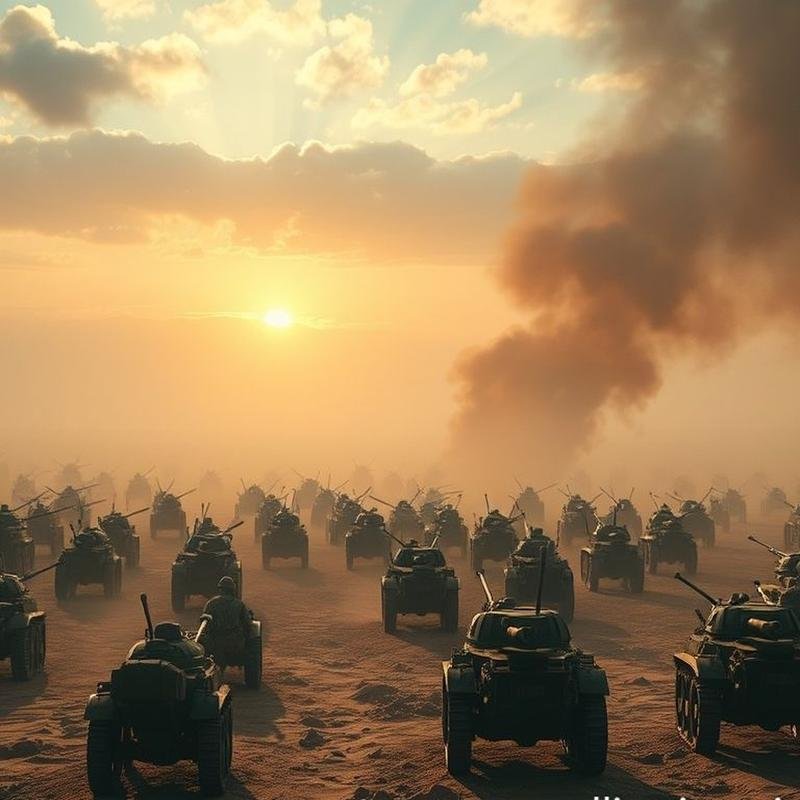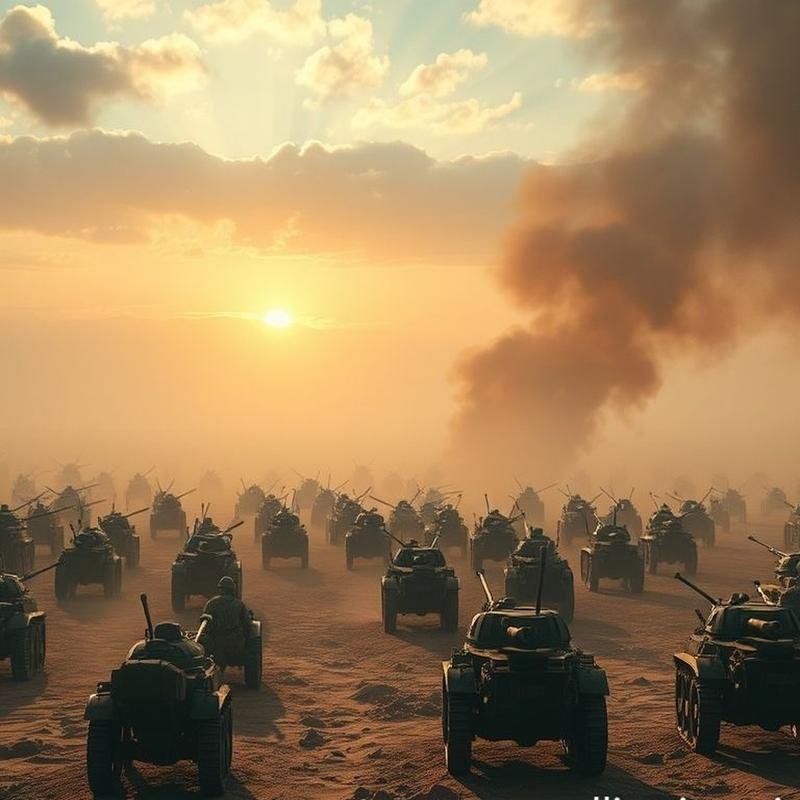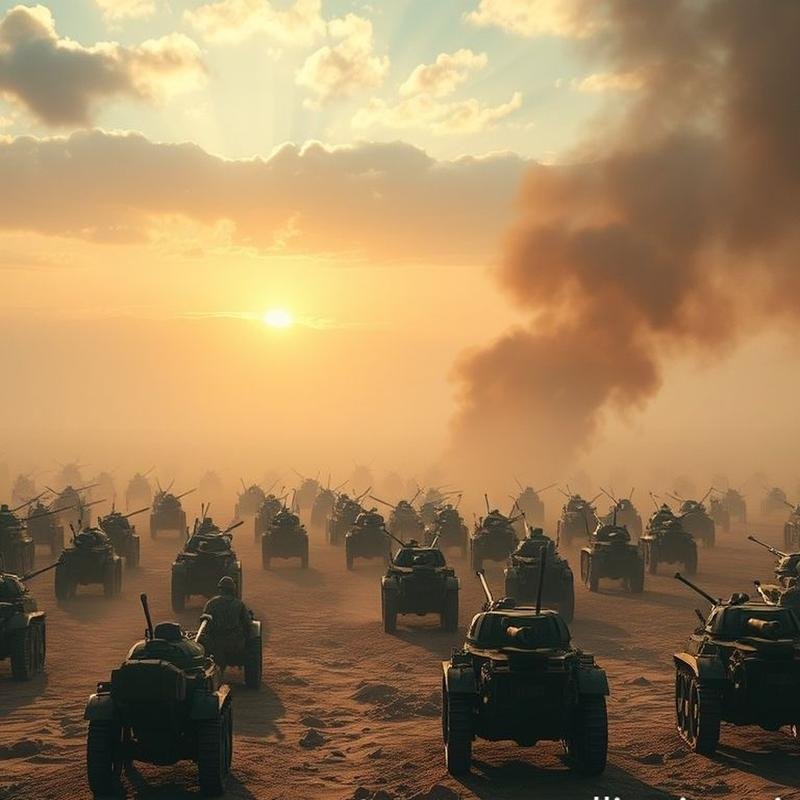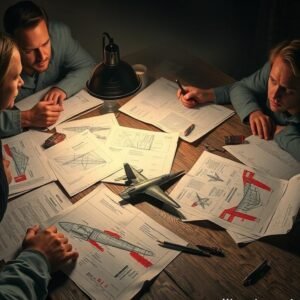The Ghost Army: A military deception unit that employed inflatable tanks and dummy soldiers to mislead Hitler – the story of a secret World War II unit tasked with deceiving the German army through visual and auditory illusions.
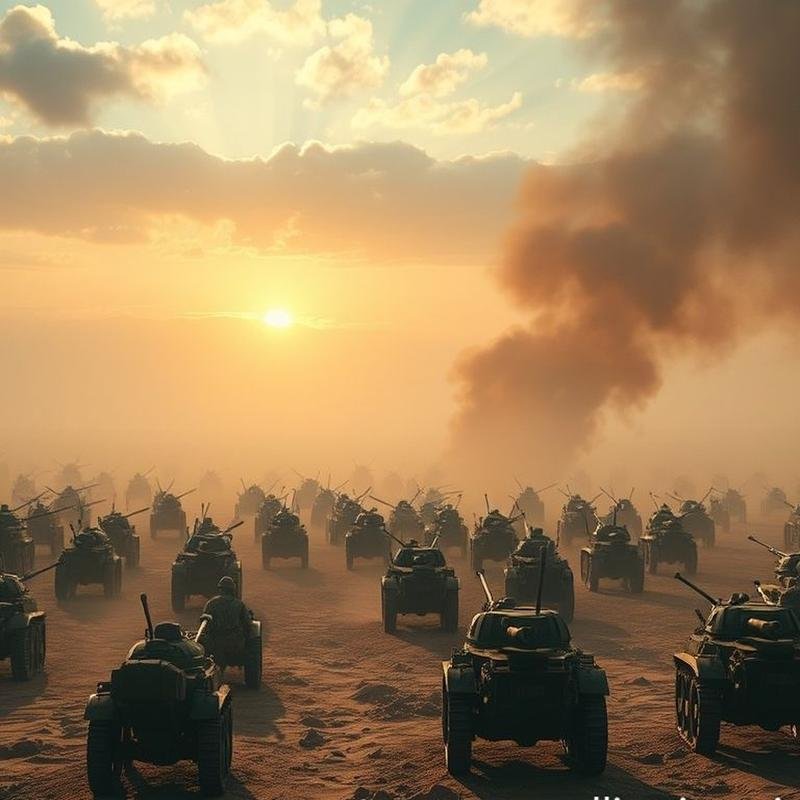
Ghost Army: WWII Deception Unit | Inflatable Tanks & Illusions
Could a phantom army defeat a real one? This is not a fantasy, but the true story of a military unit established for a singular purpose: to create illusions. In this episode, we delve into the realm of psychological warfare, revealing how masters of deception conjured mirages for Hitler and how inflatable tanks and recorded sounds became an arsenal that altered the course of World War II.
Before we explore the intricacies of this ingenious deception, which of these tactics do you believe was the most effective in misleading the Germans? And be sure to subscribe to our documentary channel for more compelling content.
The Dawn of Psychological Warfare
During World War II, the battlefields expanded beyond conventional combat to encompass the art of deception and illusion. On September 1, 1939, when Wehrmacht tanks crossed the Polish border, the invasion not only initiated a bloody chapter in history but also heralded a new era of psychological warfare. Armies recognized that conflict extended beyond the physical terrain to the minds of soldiers and civilians.
Psychological warfare emerged as a potent weapon, as devastating as heavy artillery. From the outset of the war, the warring powers understood that controlling information and influencing enemy morale could significantly impact the outcome of battles. This extended beyond mere propaganda or misleading advertisements to encompass complex operations designed to deceive the enemy and undermine their will to fight. The German army, whose strategy relied on blitzkrieg—a swift and decisive victory—possessed a critical vulnerability: its susceptibility to deception. If the Allies could convince them that they faced a superior force or were under attack from an unexpected direction, their momentum could be disrupted.
Birth of the Ghost Army
From this audacious concept, on January 20, 1944, the 23rd Headquarters Special Troops, later known as the Ghost Army, was officially established—a unique entity that would forever alter the landscape of warfare. This unit was conceived by unconventional minds and visionary leaders who defied traditional norms: Colonel Billy Harris, the architect who drew inspiration for deception tactics from his observations in North Africa, and Captain Ralph Bark, the set designer who contributed his invaluable artistic expertise. These soldiers were not merely conventional combatants but also artists, designers, actors, and engineers.
The Arsenal of Illusion
With the formation of this daring unit, the time for armament arrived. The Ghost Army’s arsenal consisted not of steel and fire, but of air and elaborate deception. At the core of this extraordinary arsenal were inflatable decoy tanks. These large structures, skillfully crafted from durable fabric and inflated with compressed air, convincingly resembled real tanks from a distance. Weighing only approximately 250 pounds each, a small team of soldiers could inflate them in minutes, transforming an ordinary field into a vibrant, illusory battlefield.
However, the deception extended beyond tanks to include fake cannons, trucks, and even aircraft, all meticulously designed to deceive German aerial reconnaissance. Vision was only one aspect; sound was an equally potent weapon. Specialized sound units, led by Hollywood cinematic sound effects expert Colonel Billy Byrnes, employed powerful loudspeakers mounted on trucks to amplify the sounds of tank movements, troop activity, and simulated construction, creating the illusion of a large military force in motion. Audio recordings broadcast the sounds of simulated battles, gunfire, and explosions to reinforce the impression of an engagement.
Masters of Disguise and Deception
Deception evolved into an extraordinary art form. The Ghost Army, officially established in 1944 under the command of Colonel Billy Harris, was more than just a military unit; it was a mobile theatrical troupe where soldiers were not merely order-takers but skilled artists and seasoned actors. They underwent rigorous training in acting and disguise to expertly impersonate officers and soldiers from different units, sometimes even assuming specific roles in local towns to mislead enemy spies and create a false impression of military unit locations. They convincingly embodied other characters, speaking different dialects fluently and confidently wearing fake rank insignia. They needed to deeply understand the enemy’s psychology, anticipate their thinking and expectations, and remain one step ahead. This was not superficial imitation but a complete immersion into another identity, a total embodiment of the character. This remarkable transformation allowed them to sow doubt and confusion in the minds of the Germans, making them question the reality of what they saw and heard.
Operation Fortitude South: Deceiving Hitler
Amidst their mastery of camouflage, Operation Fortitude South was developed as part of a broader strategy to instill doubt in Hitler’s mind, convincing him that the main Allied assault would target Calais. A complex web of deception was woven with cunning and guile. Under the command of the fictitious General Patton, the Ghost Army began constructing an army of mirages: inflatable rubber tanks expanding across vast fields and wooden aircraft rising and falling with the wind. Each element, however seemingly insignificant, was an integral part of the grand deception. Deceptive whispers circulated, and fake radio messages flowed freely, creating a torrent of false communication traffic suggesting feverish preparations for an imminent invasion of Calais. Skilled actors roamed neighboring towns, wearing fake rank insignia and loudly discussing the details of the impending invasion.
Danger lurked at every turn. Exposure of the deception would have meant certain disaster, not only for the Ghost Army but for the entire landing operation. Everyone had to maintain peak vigilance, carefully guarding every word, movement, and glance. But the deception succeeded. Hitler took the bait. Armored Panzer divisions remained stationed in Calais, even after Allied forces began landing in Normandy. They had successfully convinced the Germans that the invasion would occur at Calais. It was, as one Ghost Army officer described it, the biggest deception of the war.
The Psychology of Deception
But why did the Germans fall for the deception so readily? Why were they misled by an elaborate illusion, even as the facts unfolded before their eyes? The answer lies in the depths of the human psyche, in the interplay of deep desires and latent fears, where our perceptions of reality are shaped by what we want to believe, rather than by objective truth. Confirmation bias proved to be a deadly weapon. The Germans, burdened by pre-existing intelligence, became prisoners of their own assumptions. They disregarded subtle signals and conflicting evidence that foreshadowed danger because they contradicted their established beliefs. Their psychological expectations played a crucial role. The Ghost Army did not create a void but filled one that already existed. They exploited the Germans’ knowledge of Allied force concentrations and transformed the sounds of phantom trucks into echoes of real reinforcements, reinforcing their convictions. The psychological pressure of war took its toll. Constant fatigue and anxiety severely impaired the ability of German officers to think clearly and logically, making them more prone to errors and less able to distinguish between truth and fiction. The “old man theory” proved to be a valuable asset for the Ghost Army. The Germans, relying on stereotypical assumptions about Allied behavior, fell into the trap easily. They anticipated traditional and familiar strategies, while the Ghost Army was playing a completely different game of deception, exceeding their expectations. The inherent fear of attack served as a powerful motivator. The constant dread of an imminent massive assault exaggerated the perceived strength of the Allied forces, making the Germans more susceptible to the cunning deceptions. The halo effect also contributed significantly to the Ghost Army’s success. Their previous operations had established an impeccable reputation, making the Germans more inclined to believe any intelligence emanating from them.
Recognition and Legacy
Despite these remarkable achievements, the Ghost Army remained shrouded in secrecy, and many years passed before the world learned the truth of their heroism. Until the 1980s, their operations remained classified, locked away in restricted files. The soldiers themselves, those who had fought these phantom battles, were bound by strict confidentiality agreements, preventing them from divulging any details, even after the war ended. A complete silence, as if they had never existed. Official recognition came belatedly, in 1996, with a modest tribute in the U.S. Congress. Then came the documentary “Ghost Army” in 2013, which revealed their contributions. This was followed by a traveling exhibition that toured the United States, showcasing their innovative and unprecedented tactics. Finally, in 2022, President Biden signed a law awarding them the Congressional Gold Medal, the nation’s highest civilian honor, in recognition of their courage. Today, their original equipment and documents are preserved in prestigious museums, bearing witness to a unique chapter of World War II—a chapter not written by soldiers in the traditional sense.
Today, the legacy of the Ghost Army extends beyond museums and documentaries, resonating in modern battlefields where their strategies have become a cornerstone of military planning. They demonstrated that war is not merely a display of firepower but, at its core, a battle of minds. In Operation Desert Storm in 1991, deception units drew inspiration from the Ghost Army’s tactics to mislead the Iraqi army, contributing to a resounding victory with minimal casualties. After the war, military leaders conducted a thorough analysis of their innovative methods, which became an integral part of the training curricula at prestigious military academies. Their contributions extended to the development of modern camouflage techniques, leveraging the technological innovations they skillfully employed, such as rubber tanks and elaborate sound effects. Most importantly, the inspiring story of the Ghost Army has fueled creativity in artistic and literary works, enhancing public understanding of the importance of strategic deception in warfare and its profound impact on soldiers, while also highlighting the intrinsic value of flexibility and adaptability in military planning.
Conclusion
In conclusion, the Ghost Army proved that the power of illusion can be more potent than any conventional weapon. These 1,100 artist-soldiers replaced guns with paintbrushes and sound equipment, transforming the battlefield into a
